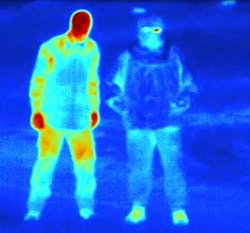Army approaches industry for reversible camouflage fabric to enable infantry to hide from infrared sensors
NATICK, Mass. – U.S. Army infantry experts are reaching out to industry for companies able to develop special camouflage fabric to enable foot soldiers to conceal themselves from a wide variety of enemy electro-optical sensors.
Officials of the Army Contracting Command Aberdeen Proving Ground Natick activity in Natick, Mass., issued a sources-sought notice on Monday (RFIForPrototypeReversibleSignatureManagementOverwhiteGarments) for the Prototype: Reversible Signature Management Overwhite Garments project.
This initiative seeks to develop reversible camouflage-printed fabrics with infrared-mitigating properties. The Army Contracting Command issued the notice on behalf of the Army Natick Soldier Systems Center Soldier Protection Directorate (SPD) in Natick, Mass.
Researchers are seeking information on the capabilities and willingness of prospective offerers to generate novel reversible multi-spectral camouflage fabrics that are invisible to infrared sensors in wavelengths ranging from visible light to longwave infrared.
With today’s advanced battlefield sensors, the infantry soldier is at increased risk of detection from electro-optical and infrared (EO/infrared) sensors ranging from visible through longwave infrared wavelengths, researchers explain.
Researchers want to develop an overgarment made from fabric that is reversible with operational camouflage pattern (OCP) on one side and snow marine pattern (MARPAT) camouflage on the other, with visible through infrared camouflage properties. Overwhite systems today do not meet the requirements of this project.
This next-generation fabric could be made into trousers, jackets, ponchos, and pack cover prototypes for spectral mitigation against battlefield EO/infrared sensor threats.
Responses should indicate the proposed fabric's technology readiness level, concept, materials, methodology, and technology. The contractor chosen will apply thermal signature management technology onto different fabrics that are reverse camouflage printed.
One side of the fabric shall be printed in traditional camouflage and provide infrared-mitigating properties, while the reverse side of the fabric shall be snow marine pattern and provide additional infrared-mitigating properties.
Each side shall be its own pattern that cannot be seen or bleed through to the other side, and provide thermal signature-mitigating properties while maintaining or improving on the performance of the current fielded snow overwhites in respect to spectral performance, durability, weight, and drying rate.
Contractor chosen shall provide 15 to 20 yards of fabric samples for evaluation of comfort, durability, strength, water repellency, oil repellency, drying rate, and signature properties. Technology shall be scalable to produce several hundred yards of material if proposals are promising.
The fabric should incorporate shortwave infrared (SWIR) reflectance on fabrics; as many as two functional finishes; be fire resistant; have no toxicity characteristics; shall weigh no more than four ounces per square yard; be water repellent and durable; should dry quickly; and retain spectral performance after laundering.
Companies interested should email pre-proposals no later than 22 May 2024 to the Army's Justin Murphy at [email protected] and Mary Prebensen at [email protected].
Email questions or concerns to Justin Murphy at [email protected] and Mary Prebensen at [email protected]. More information is online at https://sam.gov/opp/6d99f224828f45f39440b875568d9865/view.
About the Author
John Keller
Editor-in-Chief
John Keller is the Editor-in-Chief, Military & Aerospace Electronics Magazine--provides extensive coverage and analysis of enabling electronics and optoelectronic technologies in military, space and commercial aviation applications. John has been a member of the Military & Aerospace Electronics staff since 1989 and chief editor since 1995.

